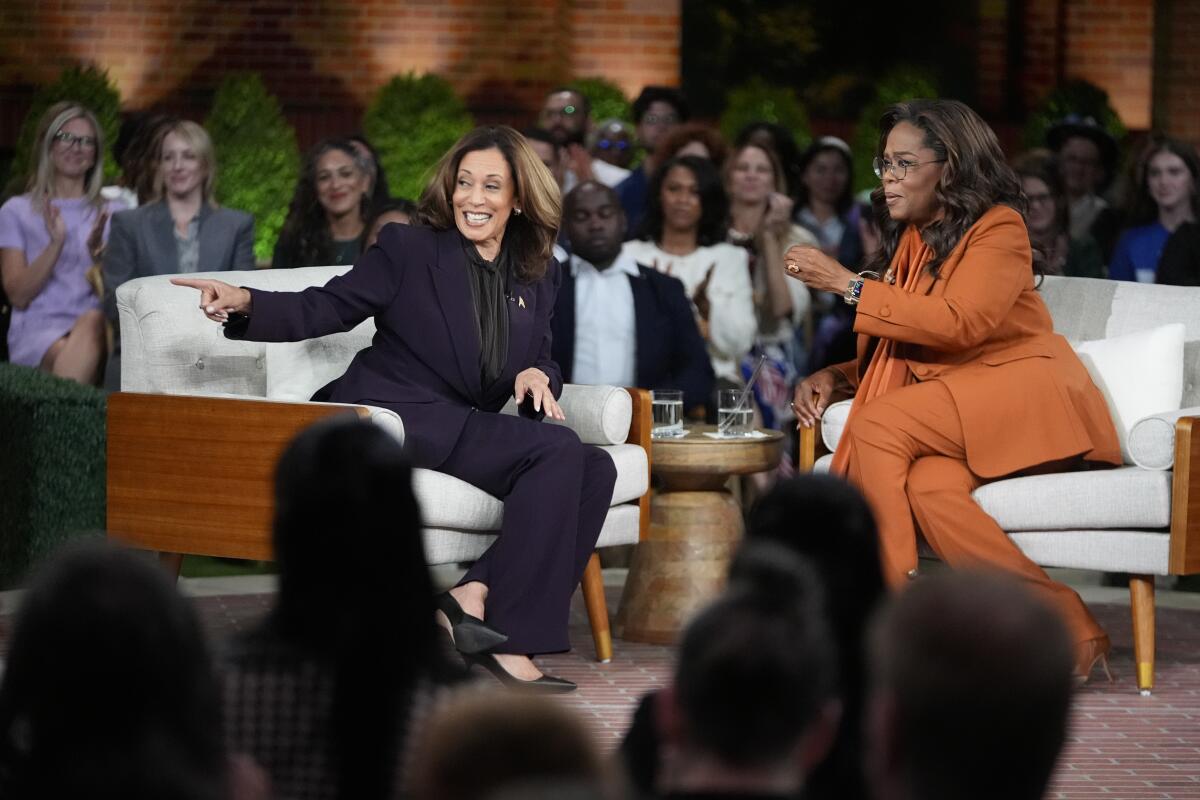Kamala Harris’ Campaign Reportedly Paid $1 Million to Oprah Winfrey’s Company in Failed Presidential Bid
In a bid to energize her campaign and reach wider audiences, Vice President Kamala Harris reportedly paid $1 million to Oprah Winfrey’s Harpo Productions. This payment was part of a larger campaign strategy that involved millions spent on high-profile entertainers and media appearances, aiming to bolster her presence in the competitive race for the White House. However, despite the efforts and expenditures, Harris ultimately failed to secure the presidency.
A Star-Studded Strategy: Oprah Winfrey’s Role in the Campaign
According to the Washington Examiner, Harris’ campaign disbursed $1 million to Winfrey’s Harpo Productions on October 15, just weeks before the election. This expenditure came shortly after Winfrey hosted a high-profile town hall for Harris in September, marking a significant partnership between the vice president and one of the most influential media figures in the United States.
Winfrey’s involvement with Harris’ campaign didn’t stop there; she also made a public endorsement and appeared at Harris’ final rally in Philadelphia on the eve of Election Day. “We’re voting for values and integrity,” Winfrey declared at the rally. “We’re voting for healing over hate.” Her support was one of the few public endorsements Winfrey has made in recent years, and the campaign hoped her influence could draw in more voters, especially given Winfrey’s broad fanbase.
Campaign Spending on High-Profile Media Appearances
Winfrey wasn’t the only media figure or platform that received substantial funding from the Harris campaign. The report reveals that Harris’ team spent six figures on a guest appearance on the “Call Her Daddy” podcast, hosted by Alex Cooper. The podcast episode, which aired in October, featured an interview with Harris and was filmed in a hotel room in Washington, D.C., after the campaign invested heavily in creating a set for the show. The investment aimed to leverage the podcast’s popularity with younger demographics and broaden Harris’ appeal to a new audience.
However, the strategy’s effectiveness was questionable, as the episode reportedly struggled to gain traction, garnering fewer than one million views on YouTube, a relatively low figure considering the campaign’s financial commitment to the appearance.
A Multi-Million Dollar Effort on Concerts and Entertainment
In addition to Winfrey and media appearances, the Harris campaign sought to generate enthusiasm and reach undecided voters in key swing states through live performances by A-list entertainers. The campaign reportedly allocated up to $20 million for concerts in swing states in the days leading up to the election, according to the New York Post. However, these concert expenditures faced obstacles, including the last-minute cancellation of a planned performance by rock artist Alanis Morissette.
Despite these challenges, the campaign pushed forward with major events across the country. Among the high-profile performers were Jon Bon Jovi in Detroit, Christina Aguilera in Las Vegas, Katy Perry in Pittsburgh, and Lady Gaga in Philadelphia. Rapper 2 Chainz also performed in Atlanta just three days before the election. These artists, popular in their own right, were intended to drive turnout and rally support, especially among younger voters and music fans.
Criticism of Campaign Spending Tactics
The significant sums spent by the Harris campaign have sparked debate, with critics arguing that the lavish spending on celebrity endorsements and entertainment did not translate to electoral success. Republican strategist Brad Todd commented on the campaign’s heavy spending, stating, “Money can’t buy you love or a good candidate,” suggesting that the investments in star power were misdirected.
The Harris campaign and its allies also reportedly spent over $1.4 billion on political advertising throughout the race, according to reports. The vast advertising expenditure and high-profile endorsements indicate the lengths to which the campaign went to reach voters and build support. However, the outcome ultimately underscores the challenges of relying on celebrity partnerships and media blitzes in a politically polarized landscape.
Looking Forward: Lessons from a Costly Campaign
The Harris campaign’s approach highlights both the potential and pitfalls of incorporating high-cost, celebrity-driven strategies in political campaigns. While endorsements from influential figures like Winfrey can amplify a candidate’s message, the lack of a clear return on investment in this instance raises questions about the effectiveness of such tactics.
The 2024 race serves as a reminder of the complexity of modern political campaigns, where traditional strategies are increasingly complemented by entertainment and social media outreach. However, it also suggests that voters may be seeking more substantive engagement over star-studded events and media appearances. Moving forward, political strategists may need to reevaluate the role of celebrity endorsements in campaigns, focusing instead on ground-level organizing and direct voter engagement.
As the Harris campaign’s story shows, even the best-known celebrities can’t always guarantee a winning strategy, and high spending does not always translate into high voter support. The lessons learned from this race may influence how campaigns approach media and endorsements in the future, emphasizing the importance of connecting with voters on issues that matter most to them.
Source : Swifteradio.com


